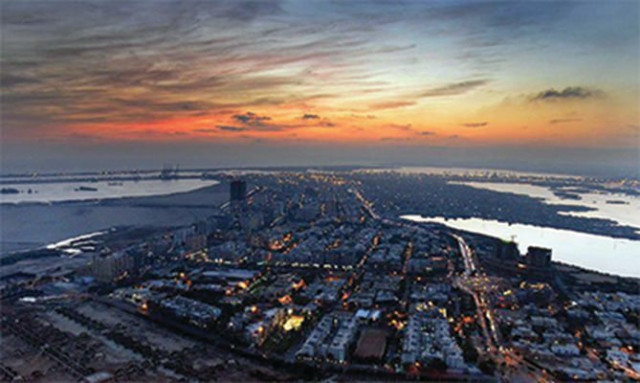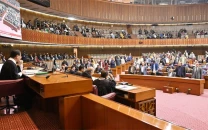Economy faces structural issues
Efforts to address a few structural problems complicate things in other areas

Pakistan’s economy has long been facing some serious structural problems. Owing to this, the economy has been recording low to moderate growth over the years.
The structural issues include low productivity of agriculture and industry, scant documentation of economy, poor fiscal management, less efficient handling of external sector issues, lethargic attitude of banks towards meeting credit requirements of private sector and utter failure of private sector to organise itself and embrace innovation as the key to survival and growth. What stems from all these issues is political instability.
Since all these problems are interrelated, efforts to address any one or two of them at a time are bound to complicate things in other areas. That is exactly what we witness during all periods of economic reforms – whether home-grown or dictated by the International Monetary Fund (IMF).
The current phase of economic reforms – partly home-grown and partly required by the IMF – is aimed at correcting a few of the above-listed problem areas of the economy. And, we are witnessing the side effects of those reforms spilling over into other areas.
This is all but natural. This must not deter the authorities from pursuing those reforms relentlessly.
However, no reforms can deliver the desired results unless the same are truly inclusive in nature. This is true in every context. But in an evolving democracy like ours, the need for inclusiveness is undoubtedly more important.
Sadly, that remains amiss. But can the country afford any longer to let the lack of inclusiveness in policies persist? Certainly not!
Farm productivity
Let’s start with the structural problem number one, ie low agricultural productivity. For quite a long time, yields of Pakistani crops and productivity of its livestock have oscillated in a narrow band or improved only marginally whereas the same for other countries has risen too fast, too big.
Pakistan’s per-hectare rice output, for example, has remained unchanged at 4 tonnes since 2008. But the per-hectare yield of rice in Bangladesh and Iran has risen 25%, from 4 tonnes to 5 tonnes in the past 12 years, according to the US Department of Agriculture (USDA) statistics.
The core problem in Pakistan’s agriculture or industry is that when policies are made for agricultural development and growth, inputs of all provinces and a true representative circle of farmers/ industrialists are not obtained.
The federal government introduces its own vision of agricultural/ industrial reforms with scant input from some provinces and selected leadership of farmers/ industrialist lobbies. Do you want an example of low productivity in the industry? Here it is: According to a World Bank report of 2018, Pakistan’s labour productivity measured through the industry’s per-worker value addition stood too low.
The country was ranked 157th out of 170 countries. India (138th), Vietnam (146th) Bangladesh (147th) and Uzbekistan (148th) got better rankings.
A true documentation of the formal economy and formalisation of the informal economy are the two key things that always remain on Pakistan’s reform agenda. But whatever push they get at times, it happens more due to IMF pressure or international trends than out of a genuine domestic quest for it.
Some rulers seek to achieve these noble objectives to raise economic growth level higher than that during other governments to seek public confidence. Democratic leaders pursue these targets to satisfy the IMF and other international lenders.
They also do this to hound political opponents in the name of accountability. That is why our formal economy remains in chaos and the size of the informal economy expands at times, and even when it shrinks – as it is shrinking now – the pace remains slower than desired. This gives birth to several macroeconomic issues.
Fiscal matters
Poor fiscal management is also rooted in the nature of Pakistan’s peculiar political setup. Politicians in the country bother less to address fiscal issues purely on merit.
All they do in fiscal management is driven by their political expediencies – sometimes they do it to regain their lost political capital and at other times to satisfy international financial institutions.
That is exactly why we saw both the Pakistan Peoples Party (PPP) and Pakistan Muslim League-Nawaz (PML-N) governments in the last decade breach the constitutional obligation of containing government borrowing from banks.
Now, we see the government adhering to its pledge of making no fresh borrowing from the central bank only under IMF pressure.
External sector issues are not handled efficiently for the basic reasons that are often the outcome of fiscal mismanagement in the country.
Foreign loans are amassed recklessly to help the government of the day plug in holes in the fiscal account. Previous governments of the PPP and PML-N did this, and now Pakistan Tehreek-e-Insaf (PTI) is doing the same.
The only difference is that the PTI does this with a convincing excuse – reckless heavy external borrowing in the past had increased external debt servicing liabilities and the PTI had no choice, at least in the first two and a half years of its tenure, but to borrow more from abroad just in order to continue servicing the already accumulated foreign loans.
The future government will likely breach the budget deficit targets to service external and domestic debt whose volume has expanded swiftly during the PTI government. It will likely revert to heavy commercial borrowing from banks, thus crowding out the private sector.
Unlike the PTI government, which is focusing more on retiring the principal amount of foreign loans, it will focus on just external debt servicing (or paying only the principal amount of foreign loans that becomes due along with interest).
This will again expose Pakistan’s economy to the twin deficit (budget deficit and current account deficit). Private sector will continue to cry for bank credit and banks will continue to wallow in windfalls coming their way through excessive lending to the government.
All this sounds too pessimistic? Let’s hope the country witnesses the opposite of it!
The writer is a mechanical engineer and is doing masters
Published in The Express Tribune, March 22nd, 2021.
Like Business on Facebook, follow @TribuneBiz on Twitter to stay informed and join in the conversation.


















COMMENTS
Comments are moderated and generally will be posted if they are on-topic and not abusive.
For more information, please see our Comments FAQ